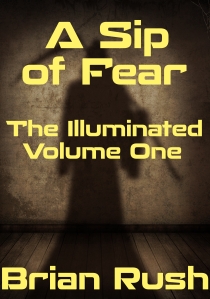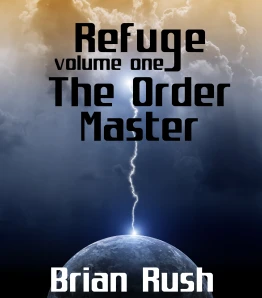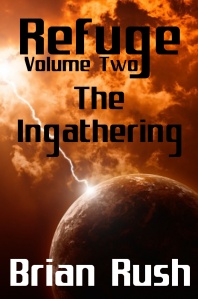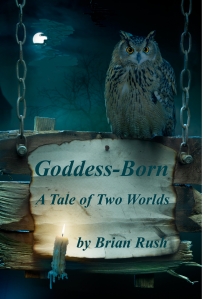 Continuing the examination of the world-building in my three (so far) published fantasy and science fiction series, I’m going to deal this time with A Tale of Two Worlds, which has at this point two titles, The Green Stone Tower and Goddess-Born. This series is alternate-world fantasy and is not set in our world, but (as the name implies) in two different alternate worlds. Human beings evolved on one of them, called the “Old World,” while the “New World” is where the Old Gods and the magic users, who became the Faerie, migrated at the dawn of civilization. I’ll deal with the worlds themselves first and go into the fantasy elements afterwards.
Continuing the examination of the world-building in my three (so far) published fantasy and science fiction series, I’m going to deal this time with A Tale of Two Worlds, which has at this point two titles, The Green Stone Tower and Goddess-Born. This series is alternate-world fantasy and is not set in our world, but (as the name implies) in two different alternate worlds. Human beings evolved on one of them, called the “Old World,” while the “New World” is where the Old Gods and the magic users, who became the Faerie, migrated at the dawn of civilization. I’ll deal with the worlds themselves first and go into the fantasy elements afterwards.
The Old World and the New World
The Old World is similar to our own world, but not identical. It is home to an early-modern civilization at the time when the story begins, roughly 18th-century Europe equivalent, and the nations have a European feel to them. There are five nations mentioned in the books, the High Vance Empire, the Kingdom (later Republic) of Grandlock, Corlia, Forcia, and Thurbia. The Empire and Grandlock have a more or less “English” feel to them, while Corlia and Forcia are reminiscent of France and Italy, respectively, and Thurbia isn’t clearly identified with any Terrestrial nation.
Prevailing technology is early industrial revolution: steam engines, railroads, muskets and cannon, gas lamps, etc. It would be a good base for steampunk if the steam tech were more outlandish, but it isn’t. Government is constitutional monarchy, but Grandlock is on the edge of a democratic revolution which actually takes place in Goddess-Born. Noble privilege is enshrined in law, and an established religion exists, the Church of the Good God who is believed ot have given humanity agriculture long ago. Magic is outlawed and its practice punishable by death, but it’s still practiced in secret. Some parts of the planet, notably the South Islands, are inhabited by more primitive societies. The Kingdom of Grandlock was once part of the High Vance Empire, but broke away and gained independence during a time of civil war in the Empire.
The New World was established as a human habitation some ten thousand years ago. The Old Gods led the magic users through a number of connecting portals, the Green Stone Towers, when most humans began persecuting mages. The inhabitants of the New World have evolved into powerful magicians, the immortal Faerie Folk, and created a strongly magical society, more primitive in technology than the Old World, but with advanced magic substituting for technology. When the series begins, the Faerie are divided into two groups. The larger group, who call themselves the People (and whom the other group calls the Foe), live in cities over most of the surface of the New World and worship and interact with all of the Old Gods except Malatant. The smaller group, who call themselves the Faithful (and whom the People call the Darklings) live in the Darkling Wood and the underground city of D’Kushith, and worship Malatant.
Both the People and the Faithful are hunters and gatherers, not farmers, but magic creates such abundance from the wild that the arts of agriculture aren’t needed and the bounty supports a civilized life. The Faerie in both their branches are immortal, but over time their hair turns white, they become infertile, and they enter a state called “Elderhood” and eventually retire from the world, going to other places prepared for them by the gods.
The Towers remain as portals between the two worlds, but they are difficult and arduous to use.
Magic
The magic of A Tale of Two Worlds is less solidly grounded in real-world occultism and more fantasy-leaning than that of Refuge. Magicians in Tale can cast spells that summon demons, untie knots and open locks, blind people with bright lights, directly cause harm or kill, and similar effects. There is ritual involved, invocation of the Old Gods, use of herbs, sigils, magical circles, and other occult devices, but the effects are not realistic or limited to real-world magic or a reasonable extrapolation; this is an alternate-reality system of magic.
Magicians are believed to be descended from the Old Gods, but that may not universally be true; certainly it must not have been true at one point, since human beings existed before the Gods did and magic was necessary to their creation.
The Gods
Each of the Old Gods in A Tale of Two Worlds was once a human being and a powerful magician, who became immortal and even more powerful through a death and rebirth transition. All of the gods in existence at the beginning of The Green Stone Tower emerged into their divinity before or roughly at the dawn of civilization in the Old World. (Two more came into being at the end of Tower and played a part in Goddess-Born.) The ten deities who existed at the beginning of the series are: Pashi of the Waters, Shavana the Mother of Life, Prathur the Storm Lord, Rontar the Hunter, Illowara of the Mysteries, Hephos the Tower Builder, Drithur Lord of Riddles, Olthas the Warrior, Lasatha the Wise, and Malatant of Shadow. Each of the gods has an Aspect that defines their main area of focus and the area of life where their power is greatest.
An especially important deity in both books is Malatant of Shadow, the youngest god (some ten thousand years old — by comparison, Pashi is roughly 200,o00 years old). Malatant is the god of shadow, cold, and the evil in the hearts of men. The People fear and loathe him, the Faithful adore him and respect him, and much is revealed about him in the course of the two books.
The Not-Gods
Unlike the gods, the Not-Gods are native to the New World and have no human origins. They are beings of immense power, and on a par with the gods, or even greater.
The most powerful and enigmatic of the Not-Gods is the Worm of the World, who takes the form of an enormous snake that circles the entire New World. Its head emerges from a cave in the mountains to devour its prey, who are digested alive in its belly, their struggles and suffering feeding the magic of the world; the Worm takes only the wicked and cruel to feed its hunger.
The other Not-Gods are the Phoenix, the Moonbird, the Wolf Lord, the Turtle King, the Tree Spirit, and the Mightiest Troll. Most of those don’t come into either The Green Stone Tower or Goddess-Born, although the Worm, the Phoenix, and the Moonbird play small parts.
Quasi-Humans
The Faerie Folk were originally human and are descended from the magic users of the Old World who fled to the New World. The only other quasi-humans mentioned in Tale are the trolls, who are big, dim-witted brutes of the New World, hostile to the People and even more hostile to the Faithful.
Next week: world-building elements in The Star Mages.







